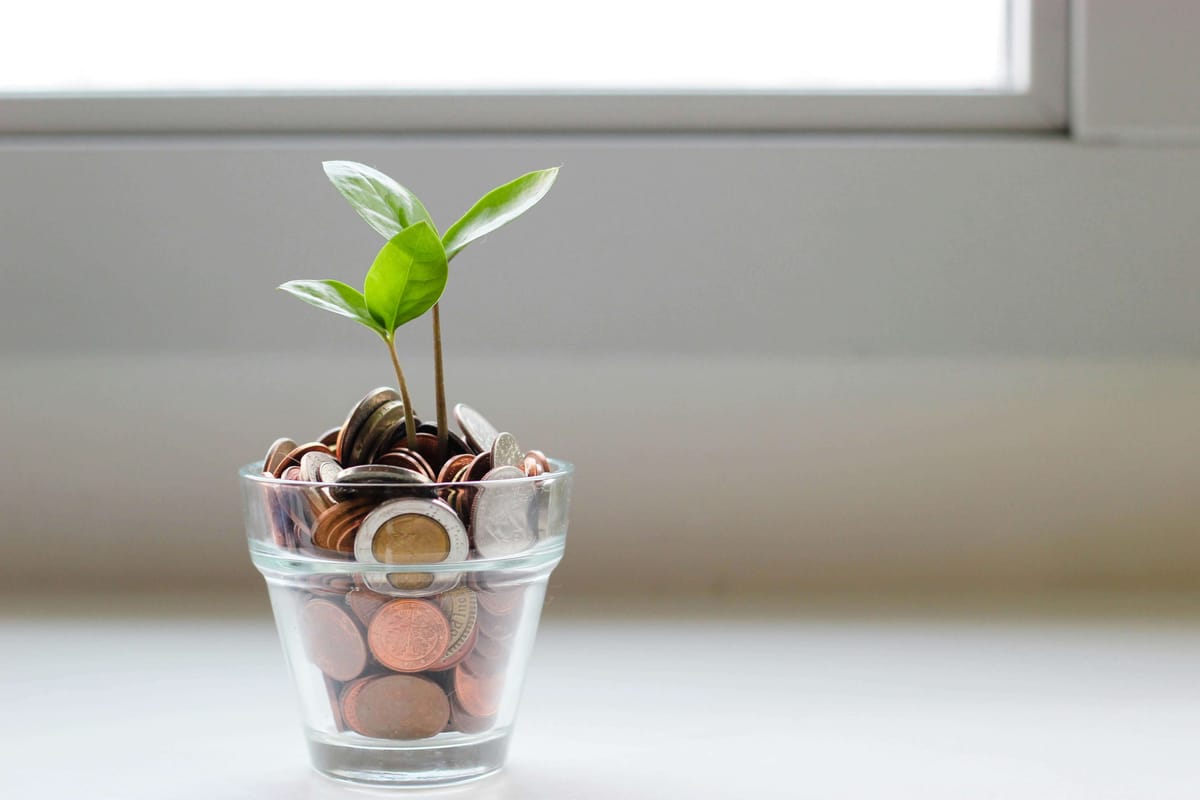How many times have you thought “Ugh! I wish I'd known that”? Now imagine if you had a dollar for each of those moments. You’d be rolling in it, right?
While you may have had to earn that knowledge the hard way, sharing it with customer success teams navigating similar challenges could save them countless headaches and missteps. By passing on your hard-won expertise, you have the opportunity to smooth the path for your peers and make their jobs a little bit easier.
Customer success is always evolving, and no one knows this better than the Customer Success Managers, the Heads of Customer Success, VPs, and Chief Customer Officers – all of the CS professionals currently working in the field.
It’s no secret that customer success is a complex maze of client expectations, tech advancements, and organizational challenges.
To uncover the most valuable insights from seasoned customer success professionals, we asked a diverse group of distinguished CSMs and CS leaders – CSC's “24 in 2024” – to share the #1 piece of advice they wish they'd known when starting out.
In a nutshell, their advice covers all manner of bases, including these crucial topics:
- The importance of cross-functional collaboration
- The role of data analytics
- Proactivity vs. reactivity
- The ever-evolving nature of customer success
- Setting expectations and relationship-building
- Revenue growth and commercial impact
- The importance of community-building
- Understanding customers and processes on a granular level
- Embracing customer success-dedicated communities
- Personal growth and continuous learning
- Enterprise client knowledge
- Having strategic focus and big-picture thinking
- Being resilient
- Customer success is a vital role
These insights are crucial for anyone looking to get started in CS. Let’s see what they had to say. 👇
Collaboration across departments
No one person is an island. The seamless integration of customer success with other departments such as sales, marketing, and product development is crucial for a complete understanding of customer needs and delivering superior customer experiences.
Now, of course, our “24 in 2024” understand the importance of cross-functional collaboration within their organizations. But what exactly did they have to say about this all-important topic?
According to Claudia Belardo, VP of Customer Success at Red Sift:
“I wish I had been prepared for the challenges associated with establishing and recognizing the value of a collaborative approach between different departments within a company.
“So many companies immediately get on board the CS or CX train with great enthusiasm without fully understanding that order to be outstanding will also mean the power center within your organization to customer success; this means changing not just how customers are serviced but establishing a customer-centric thread that sews together all functions and departments within a company to approach the entire lifecycle from prospect to paying customer differently.
“Effective communication and cooperation between customer success, sales, marketing, and product development teams can lead to a more holistic understanding of customer needs and an improved overall customer experience.
“The companies that embrace this are the most successful ones; the majority that I have come across are, in reality still only semi-customer-success-y (is that even a word?!).”
Ashish Mehta, Customer Success Manager at Cornerstone OnDemand, notes that:
“Ensuring cross-functional collaboration with other departments such as product, engineering, and sales is the bedrock of customer success.”
The role of data and analytics
Make no mistake, data analysis is inescapable when it comes to customer success. Understanding and leveraging customer data isn’t just a recurring theme that crops up every now and then, it’s an integral part of the fabric of customer success.
It’s perhaps unsurprising then that customer success leaders cite data-driven decision-making and the ability to translate data into actionable insights as career-defining revelations for effective customer engagement.
For Robert Dean, Head of Client Success at ProCircular, the biggest learning curve for him was understanding data, and this is something he stresses every new CSM should try to tackle early in your career:
“Starting out as a CSM, your focus is on developing skills as a strategic thinker, relationship builder, and problem solver. Understanding data, however, is what starts to set you apart.
“Data is often seen as a highly complex and often intimidating undertaking to learn, but you don’t need to be a data scientist. You just need to have a high-level understanding to enhance your ability to make informed decisions and identify trends.”
Jenelle Friday, VP of Customer Success at Forecastable, shares this sentiment:
“Data, good data, is king. Meaningful data analysis lies at the heart of successful customer success strategies.
“Transforming data into actionable insights is a critical skill for effective CSMs. This enables them to become trusted partners, working alongside customers to develop personalized strategies that deliver measurable ROI and align with their long-term business goals.
“By demonstrating the value of their proactive guidance, CSMs can foster deeper relationships and cultivate long-term customer success, leading to increased annual spending and recurring renewals.”
Proactivity vs. reactivity
When you’re starting out in customer success, you need to be prepared for a significant shift to take place: moving from a reactive to a proactive approach.
If you’ve come from a support or sales background, you might already have a naturally reactive response to customer interactions. For our “24 in 2024,” getting this mental switch right is key to a successful career.
For Chinelo Diejomaoh, Customer Success Manager at NorthRow:
"I wish I knew the significance of initiating proactive communication and prioritizing customer education right from the start. In the initial stages of my career, I might not have fully comprehended the transformative influence of consistently engaging with customers before challenges emerge, actively steering them towards optimizing their product or service usage.
"Recognizing the impact of proactively identifying and tackling potential issues, providing valuable insights, and assisting customers in realizing the complete value of the product could have markedly improved my effectiveness as a customer success professional. This strategy not only fosters more robust relationships but also plays a pivotal role in enhancing customer satisfaction and fostering loyalty."
For Dhia Hayouni, Principal Customer Success Manager at Hivebrite, he wishes he'd known about proactive identification and resolution of potential issues:
"New customer success professionals (and I was one of them!) may focus heavily on reacting to customer problems as they arise. That’s natural. But it's equally important to anticipate challenges and address them before they become major concerns and before the CSM feels like they’re just putting out fires.
“Proactive customer success involves understanding the customer's needs, foreseeing potential obstacles, and implementing strategies to prevent issues, fostering a more seamless and positive customer experience.”
Proactivity is a vital step in the CSM's education, according to Mike Lee, Manager of Customer Success at Avalara:
“The two things I frequently speak about wishing I had known before I started as a CS professional are two-fold: the importance of active listening, and opting for proactivity instead of reactivity.
“Early in my career, I wish I understood the profound impact of truly listening to customers – not just hearing their words but understanding their needs and pain points, which is crucial for long-term success.
“As for proactivity vs. reactivity, I'd have benefited from grasping the value of anticipating customer needs and issues before they arise rather than simply reacting to situations as they occur.”
It's not always easy to make that shift from reactive-thinking to proactive-thinking, especially if you've previously worked in a function that demands reactivity, according to Sam Morris, Customer Success Operations Specialist at Juniper Networks:
“Coming from a customer service background, I used to think customers would just come to me. And while relationship building is still a huge part of CS programs, it’s different to support. Customer success is a two-way street, and proactive communication is just as important as being reactive – even more so, I would say!”
Be adaptable in the evolution of customer success
The nature and understanding of customer success have evolved significantly over time. Insights from our 24 in 2024 reflect on how the role and strategies of customer success have changed, underscoring the need for continuous learning and adaptation.
It’s time to lean into adaptability and agility if you want to keep up with customer value.
To draw on the words of Samantha Blum, Director of Customer Success at data.ai:
“Customer success as a role hasn’t been around for that long, only within the last 10-15 years.
“Therefore, challenging the status quo in how you follow CS processes and delight your customers is how everyone continues to grow and build new powerful ways of being successful.”
For Chris Dishman, SVP, Global Customer Success at Totango:
“When I started out in customer success, [the whole function] was brand new so no one knew anything! That being said, I've learned over the years that customer success is unique for each company based on size, maturity, product, industry, etc.
“At Totango, I have the advantage of seeing how customer success teams – of all shapes and sizes – can be impactful and then being able to channel those best practices across the industry. It’s not uncommon to see businesses or new CS leaders looking for a 'one-size-fits-all' approach to customer success.
“Still, the reality is that each business has to adapt the concepts and practices of customer success to fit the core need of driving value for their customer. From there, it’s being flexible and iterative as your team continues to learn what ultimately drives value for your customer and your business.”
Setting expectations and relationship-building
Setting clear expectations and building strong relationships with customers are fundamental to successful customer outcomes.
These aspects are crucial for trust, loyalty, and long-term success. Here’s what our “24 in 2024” had to say:
According to Jasmine Collins, Customer Success Manager at Lunio:
“Looking back with the confidence and knowledge gained, I would work on customer expectation setting, this is something I struggled to do.
"It's not always about meeting every expectation; sometimes, it's about realigning them. Defining what a customer can expect from our product or service, as well as outlining our expectations from them, is crucial.
“Yes, it might lead to some short-term disappointment or an uncomfortable atmosphere. However, the discomfort of clarity leads the way to trust. Setting clear expectations establishes the foundation for a successful and enduring relationship.”
For Kristi Faltorusso, Chief Customer Officer at ClientSuccess, getting to grips with the fact that customer success isn’t a one-size-fits-all model was a big learning curve. Accoridng to Kristi, "it’s not even a “one-size-fits-most”:
In my early days of leadership, I’d often take what worked at one company and apply it to others, only to realize that it didn’t work.
“The reality is that every business, product, market, persona, challenge, etc. is unique and all of these variables (and more) must be considered when building out a successful customer success business.”
Proactivity is the key to all of the good stuff customer success strives to achieve, according to Ashish Mehta, Customer Success Manager at Cornerstone OnDemand:
“To successfully retain your customers, this can only be done through strong, lasting relationships, by understanding customer needs and addressing the key issues promptly.”
Revenue growth and commercial impact
Several CS leaders pointed out the critical role of customer success in driving revenue growth through upselling, cross-selling, and fostering customer loyalty.
This shift towards viewing customer success as a revenue driver rather than a cost center marks a significant evolution in the field.
"Be a revenue driver, not a cost center," champions Mo Gorman, Customer Success Department Manager at Wilson Language Training:
“When I first began my career in customer success I was part of a company where we were building CS for the very first time. Historically, we had a renewals team that handled the commercial responsibilities so our CSMs assumed a reactive approach – solving issues and answering questions.
“We quickly realized that in order to be a profitable CS team, we needed to drive upsells, cross-sells, and revenue increases to help accelerate company growth. We needed to partner with our renewals team to have a stake in the commercial side of the role.
“Moving forward in my career, I have always made sure that the CS teams I’m working on directly generate revenue for the business to increase net income.”
Danielle Martin, Head of Customer Success at TryHackMe, admits she underestimated the commercialism of customer success when first starting out:
“Coming from a sales background and pivoting into customer success, I was unaware of how commercial customer success actually is – with that comes a lot of revenue generation, pipeline management, and forecasting!
“When I started to scale my CS team, I had to do my research and get to grips with how CS teams are compensated and how to track success such as NRR, ARR, etc. It would have been great to have this knowledge beforehand!
“Thankfully, having a solid background in client-facing account management and sales set me up well for the steep learning curve, but if you have limited commercial experience – and if you really want to excel in CS – I'd suggest doing as much research as possible into every aspect of the commercial side of CS.”
Importance of community building
The significance of creating and nurturing a community around a product or service is a theme that resonates with customer success professionals.
This approach fosters collaboration and shared learning among customers, enhancing the overall value delivered.
"Community goes a long, long way," informs Marco Carrubba, Director of Customer Success & Account Management at Microsoft:
“In my experience, customers can be as helpful as your team in sharing best practices. Why? Well, they can have a stronger influence on the future of your product and become powerful advocates.
“If you create opportunities for customers to connect and invite them to join your journey, then your ability to assist them will increase.
“Your goal should be to transform the old vendor-client relationship into a full and healthy collaboration, where the ultimate shared objective should be to serve the customer's customer better – together.”
Understanding customers and processes on a granular level
Diving deep into the details of customer interactions and processes on a granular level is essential for crafting targeted and effective customer success strategies.
This approach involves a meticulous analysis of every touchpoint in the customer journey, from onboarding and support to renewal and feedback mechanisms, something Simone O’Donnell, Head of Customer Success at GoJoe, says is crucial:
“Looking back on my journey in customer success, one aspect I wish I had understood from the outset is the immense value of meticulously analyzing processes at both a macro and micro level.
“When I started, my focus was primarily on the broader picture, but over time, I've realized how pivotal it is to delve into the granular details of every stage - from client onboarding and renewals to handling complaints.
“Having a thorough understanding of each process in its “as is” state has been a game-changer. It allowed me to identify specific areas needing improvement, which, in turn, has significantly reduced churn.
“This deep-dive approach helped me uncover inefficiencies and gaps that weren't apparent from a high-level view. It's like examining a complex machine – understanding each cog and wheel gives you a much clearer idea of how to enhance its overall performance.
“In retrospect, this granular focus would have equipped me to make more impactful changes earlier in my career. The knowledge that fine-tuning each step of the customer journey can lead to substantial improvements in customer satisfaction and loyalty is something I now consider invaluable in my role.”
Embracing communities of customer success peers
The value of being part of a global customer success community is a theme that underscores the importance of learning from peers, sharing best practices, and supporting one another in advocating for the industry.
Haig Kingston, Head of Customer Success at OpenBlend, is a champion of online spaces to promote CS education:
“The customer success community and its global reach, have played a huge part in my education to date and helped me with my own career development. It's a community that's willing to support and encourage others to advocate for our industry.”
Personal growth and continuous learning
The customer success journey is marked by continuous learning and personal growth.
According to our “24 in 2024,” embracing experimentation, learning from mistakes, and being open-minded are critical for advancement and success in this field.
For Marco Carrubba, former Director of Customer Success & Account Management at Microsoft:
“My journey of growth and learning has been gradual and experimental. I owe my current position to the previous steps, the errors, and the open-mindedness that I have shown. Therefore, I value the past and I believe that living it is essential and conducive to progress and success.”
Minna Vaisenen, Head of Customer Success and Accounts at Thrive Partners:
“I'm going to use the Swan Lake analogy here: You need to make it look elegant and effortless to the customer as if nothing they ask is ever a bother. Yet, you are feverishly paddling to make it all happen simultaneously across all the customers.
“There’s never a pool of endless resources, support, or time – regardless of what level of majority or size of CS organization is at your company. Everyone should know and practice how to prioritize relentlessly if they wish to succeed in the customer success world.
“Similarly, the art of juggling conflicting priorities in product development especially as it comes to customer needs, has been a learning curve. Especially for someone who wants to work in an early-stage company, I would encourage them to learn the meaning of MVP and the 'build, measure, learn' concept.”
Enterprise client knowledge
The need to continually evolve one's strategic approach to effectively serve a diverse range of customers. Whether navigating the nuanced demands of enterprise accounts or strengthening bonds with smaller businesses, Customer Success Managers must be equipped with the right mindset and tactics to drive long-term, high-value relationships.
According to Matthew Gardner, Director of Customer Advocacy at RouteThis, knowing how to work with different tiers of customers would have been monumentally useful when starting out:
“As we’ve moved up the market and started working with larger enterprise clients, I wish I could have magically 'beamed in' the knowledge of enterprise requirements – and the difference in expectation level – as we began to work with these new partners.
“It would have been great to come in loaded with a solid value realization framework for our own products that resonated with these large organizations, especially with the current global economic environment.”
Strategic focus and the big picture
Understanding and focusing on strategic activities that drive customer adoption and impact the top line is crucial.
This involves recognizing the role of customer success in conducting health checks, success planning, and engagement reviews as part of the customer journey, according to Akash Singh, Head of Customer Success (APJ) at Software AG:
“10 years ago, when I first transferred into customer success, the role of the CSM was relatively new. The field itself lacked knowledge regarding driving adoption and what it could do to impact the top line.
“Back then, I wasn’t aware that conducting strategic activities like health checks, EBRs, success planning, etc., as a part of the customer journey, could lead to a rise in adoption. Nor did I realize this would improve the customer experience and, in turn, make customers more sticky, which helps improve renewal and expansion rates, and mitigates churn, impacting your organization’s profitability.”
Being resilient
Being resilient in the realm of customer success means embracing adaptability and maintaining a steadfast commitment to client satisfaction, even in the face of adversity.
This resilience is characterized by the ability to navigate through challenging situations, such as budget cuts, shifting market demands, or unexpected service issues, with a positive and solution-oriented approach.
Stijn Smet, Head of Customer Success at Whale, has some words of wisdom to share on this topic:
“Never let churn get under your skin. It's so tempting to fully immerse yourself in the role of the adoptive mom in a customer relationship, genuinely wishing for their success and growth.
“But, truth be told, 99% of the time, it's not on you when a customer decides to churn. It's crucial to step back and see the whole picture.
“In my experience, keeping a keen eye on churn post-mortems has been a game-changer. It not only serves as a report card to showcase to the higher-ups where things went south but also as a personal reassurance.
“Remind yourself – it's not your fault. As someone quite wise once put it, 'How lucky I am to have something that makes saying goodbye so hard.' (I'm almost certain he rocked a red shirt…)
“Being a Customer Success Manager is a labor of love. We pour our heart and soul into nurturing these relationships, making it all the more challenging not to take them personally when things don't work out.
“But here's the hack: lay out the facts in a churn post-mortem. It's therapeutic and puts everything into perspective. So, chin up, and remember, it's not just a farewell – it's a lesson in resilience.”
Customer success is a vital role
For some when beginning their careers in the CS field, customer success isn't automatically recognized as the revenue-driving, relationship-building function it is.
When Debbie Ooi, Senior Customer Success Manager at Nitro, first started out, she didn't realize the impact customer success efforts would have on her organization:
"CSMs are thought leaders in their own right and this can be a rewarding career. There were times in my early years when I felt like the person who was only there pushing emails, scheduling meetings for others and taking escalation calls front right left, and center.
"But over time, I learned to shift my mindset and lean into my true value and strengths as a CSM. As subject matter experts, businesses rely on CSMs to help guide them through operational and strategic challenges. With the right consultative approach, a CSM's impact on the success of a business or individual customer is truly satisfying."
Alright, let’s wrap this up!
Tapping into the collective wisdom of Customer Success Collective’s 24 in 2024 has certainly highlighted some invaluable insights about the lessons they wished they knew before diving into the world of customer success.
Feeling inspired or curious about how these lessons could shape your own path in customer success? Maybe you’ve got some wisdom of your own to share or you’re on the hunt for advice?
Our Slack community is buzzing with CS professionals just like you, all keen to exchange stories, solutions, and support. Why not join the conversation and see where it takes you?



 Follow us on LinkedIn
Follow us on LinkedIn












